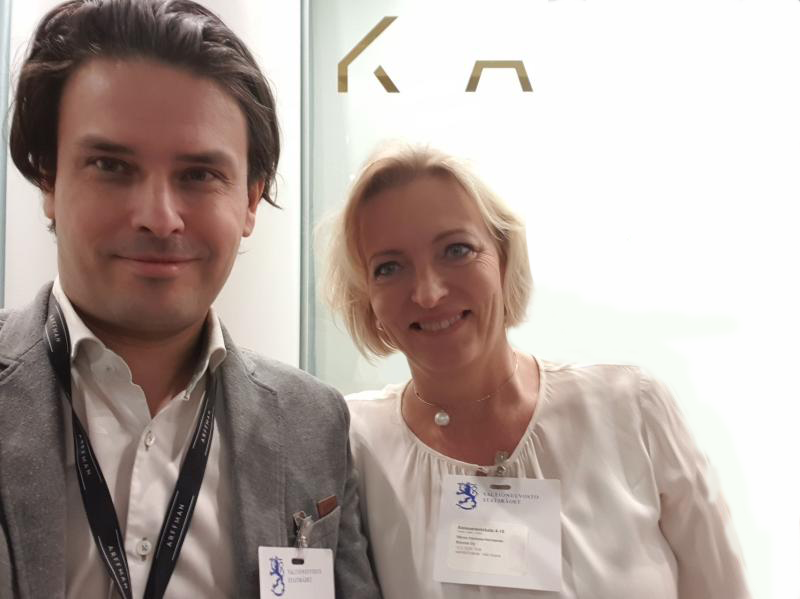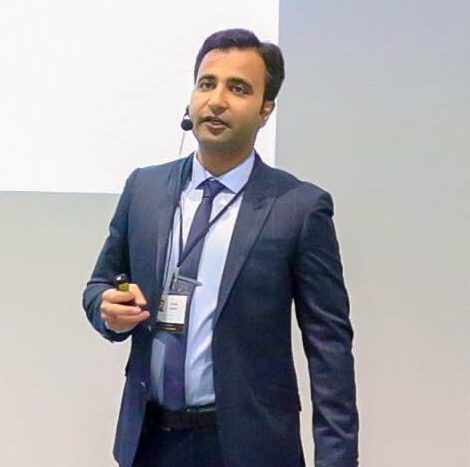Arffman – Barona Collaboration: New Dimension of Open Innovation?
- Uutinen
- |
- 27.04.2020

Like all other businesses, Arffman is trying its best to solve issues and problems related to language learning and integration issues in Finland. However, companies reach a stage when they need to look for partners, helpers, and idea generators to collaborate with them to enhance the customer experience and introduce new products/services to the market. As Walter Payton once said, “We are stronger together than we are alone.”
Do Stronger Together and the concept of Open Innovation have the same core concept or not? Henry Chesbrough proposed the term ‘open innovation’ in 2003 in his book Open Innovation: The New Imperative for Creating and Profiting from Technology. Nevertheless, this concept had existed since the 1960s, though today, ever-changing market dynamics, digitalization and survival of the fittest have made it relatively more important, leading to intercompany collaborations and mergers at different levels.
The work culture and approach of companies has changed in today’s fastest-growing markets. All growing companies are more and more open towards their business models and collaborating with different types of partners such as SMEs, MNCs, and educational and research institutes. Companies are also ready to pick up ideas from their employees in various departments, shaping them in-house or taking help from externally available resources. Google is one of the most successful flagship examples of open innovation – it develops products in collaboration with its employees and external partners. The continuous learning and inquiry process within such companies helps them in identifying ideas and transforming them into great innovations. All participating bodies have benefited from these open collaborations, whether employees, researchers, external providers or small and medium-sized companies.
Open innovation and new ideas
Not a single organization or individual can claim that they will remain innovative forever. This is because generating innovative ideas is not something that can be patented. Apple’s innovation system is one of the great examples of bringing repeated innovations to the market. How have they achieved this? The answer is simple – Apple’s company culture, structure and hierarchy have been so easy-going that from the beginning everyone could convey their ideas to management and later the organisation really listened to potential ideas for future product development. Can it also be arguable that the open innovation culture has always provided successful results? The answer is Not Really – it may be the case that out of 10 ideas, nine might lose money and resources but the remaining one idea might reap so much profit in terms of intellectual property and capital that any lost money and resources in the other nine are insignificant. Patent issues still exist and companies need to find an acceptable solution for all contributors. However, this should not slow down the process of collaborating, connecting and developing together.
Sustainable and Eco-Innovations
When companies were innovating independently in-house and launching innovative products on the market, eventually many have faced the question of how environmentally friendly and sustainable these products were. However, collaboration in open innovation settings always poses similar challenges for the external partners or possible organizations during the development stages regarding what is sustainable and good for the environment. This collaboration can eliminate all possible environmental challenges that can possibly harm the growth of an innovative product or service.
Arffman – Barona: really stronger together?
In the Arffman and Barona collaboration, things are not very different either from the concept of Open Innovation. Both companies are trying to complement each other to solve the challenges faced in their respective markets. In today’s challenging business environment, companies have to react quickly and wisely enough to capture opportunities. Companies have to think out of the box and innovate 24/7 otherwise their competitors will be the winners. When companies are stronger together, this not only means making huge profits together, it also means spending a portion of it wisely on R&D and innovative solutions. The continuous collaboration between Arffman and Barona along with other partners employing the open innovation concept will definitely lead to new innovative services, products, and discoveries faster than if working alone or independently. Additionally, open innovation not only means capturing a share in markets, it also means developing an open culture in collaborating organisations so they can maximise productivity internally. This will also speed up new service and product deliveries in the market.
At the end of the day, Arffman and Barona should remember the great values that made them successful, and by sharing them in an open environment with other external partners, great things will definitely happen in the future. The best ending of this article could be also the thought of Walter Payton: “If you forget your roots, you’ve lost sight of everything.”
About Author

As Coach and Business Coordinator of Arffman, Afnan contributes to Customer Service and Business Innovation possibilities, and the Research-based analysis. Follow Afnan (twitter.com/afnan_khann)